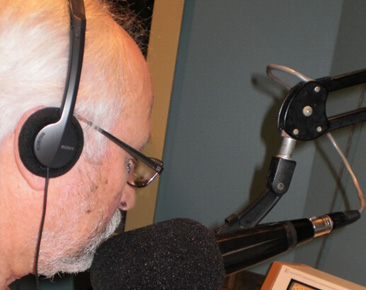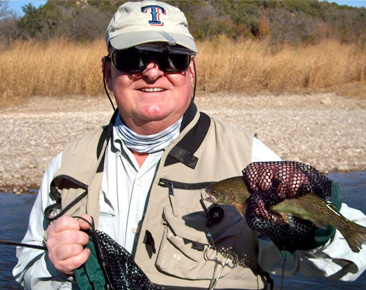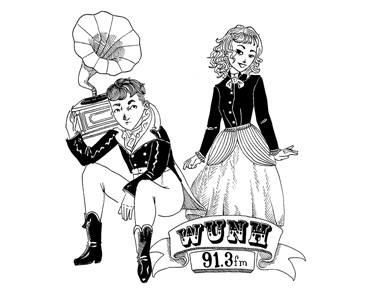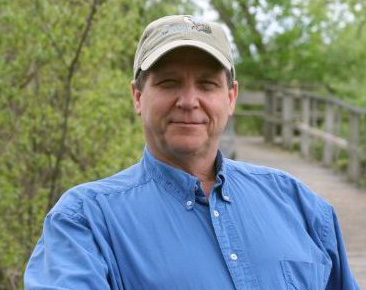
 Bluegrass is a tricky sort of music. As musicians and fans, we want to make sure to honor the past. For many folks, it doesn’t get much better than Bill Monroe’s 1945-46 band. However, Monroe and most of the other first-generation artists are gone now, and more and more, the music that they created has been stretched and smoothed and turned upside down. So what are we to do?
Bluegrass is a tricky sort of music. As musicians and fans, we want to make sure to honor the past. For many folks, it doesn’t get much better than Bill Monroe’s 1945-46 band. However, Monroe and most of the other first-generation artists are gone now, and more and more, the music that they created has been stretched and smoothed and turned upside down. So what are we to do?
DJ David Blakney sums it up well in regard to his profession. “It’s a programmer’s mandate to stay current with the music, present the artists performing and recording today as well as Monroe and the first generation that defined the music and made it possible.” Although Blakney himself often prefers a more traditional sound, he acknowledges that in order to continue growing, both sides of the music need to be made available to the public.
Blakney’s personal involvement in the bluegrass world stretches back to 1985, when he began assisting Larry McDaniel on the Arkansas Traveler show on Detroit’s WDET. He has been continuously involved in bluegrass radio ever since, assisting McDaniel until his show went off the air in 2009, and more recently, hosting his own show. Blakney was asked by CJAM, a radio station that makes its home at the University of Windsor in Ontario, Canada, to start a bluegrass program in 1991. What began as a two-hour show has expanded to four hours, is now the station’s most popular program, and has earned Blakney the title of DJ of the Year from the Central Canadian Bluegrass Music Awards in both 2012 and 2013.
 So how does Blakney make sure that he is exposed to bluegrass both old and new? One way is his continued participation in IBMA. He says that as a longtime IBMA member, he has attended every World of Bluegrass Conference, beginning in Owensboro in 1987. In that time, he’s surely almost seen and heard it all.
So how does Blakney make sure that he is exposed to bluegrass both old and new? One way is his continued participation in IBMA. He says that as a longtime IBMA member, he has attended every World of Bluegrass Conference, beginning in Owensboro in 1987. In that time, he’s surely almost seen and heard it all.
We recently took the time to ask Blakney a few questions about his thoughts on bluegrass. Here’s what he had to say.
How would you define bluegrass music as a genre?
“Bluegrass music is a melding of Celtic, Gospel, blues, and jazz, fathered by Bill Monroe in 1939 in the American South East and played around the World! A predominantly vocal form characterized by high lonesome leads and harmonies and supported by stringed instruments in a unique ensemble form (guitar, bass, banjo, mandolin, fiddle, and sometimes Dobro). Perhaps the only true remaining Country form – not to be confused with stringband and old time.”
What form of bluegrass do you most enjoy?
“Modern Traditional.”
What artists do you consider examples of the form you most enjoy?
“Big Country Bluegrass, Junior Sisk, Larry Sparks, Balsam Range, Blue Highway, Joe Mullins, Boxcars, Johnson Mountain Boys, J.D. Crowe, Longview, Bluegrass Album Band, etc. This is just a few. The bands are too numerous to list.”
If you could only listen to one album for the rest of your life, which one would it be?
“Could never tie myself to one album and could never make that choice. Need variety and diversity. It’s a programmer’s mandate to present the music being performed and produced by today’s artists.”
What album is currently in your car stereo?
“None – Sirius Bluegrass.”
Artists who are interested in submitting their music to Blakney for airplay consideration can mail a CD to him at either a Canadian or American address.
Box 153
South Woodslee, ON N0R 1V0
Box 32133
Detroit, MI 48232
If you host a bluegrass radio show and would like to participate in our chart as a weekly reporter, please fill out this form and we’ll get right back to you.







